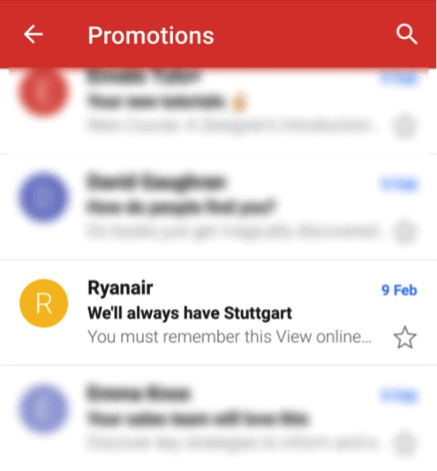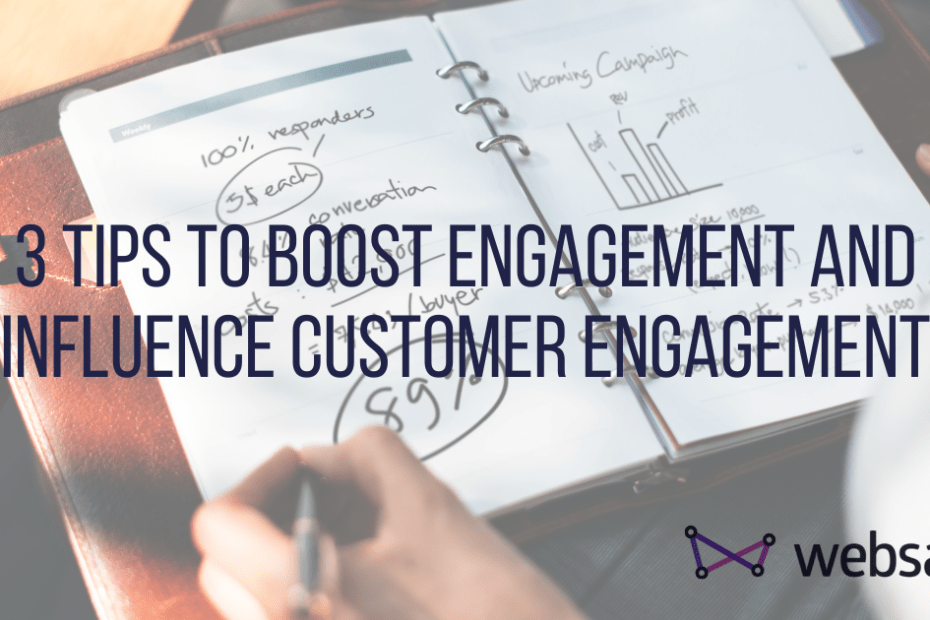Boost engagement and influence behaviour by understanding the power of bias
Email marketing is a great tool to influence behaviour from your audience. Websand helps you create the segmentation options you need to identify people based on their spend behaviour or their profile or their marketing engagement. So that’s the data side of things covered, but to really nail down email marketing excellence you also need to get your marketing message right.
Studying how to influence behaviour
Luckily, people have been studying how to influence behaviour since age of the Greek Philosophers, the first being a rather clever chap called Protagoras.
He believed that everything was relative depending on your individual point of view, which became the founding principle of ‘Relativism’ and first coined the phrase ‘man is the measure of all things’ (I’ll bet you didn’t expect that from an email marketing blog).
So why is that important to email marketing?
Good question, well
The more we understand our audience and their perception of our brand at each stage of the process, the more likely we’ll be able to influence the behaviour of our target audience in a positive way.
From the segmentation side, we understand the behaviour that someone has already taken. So we can define an audience based on previous behaviour.
This helps us to make some judgements from the point of view of that person, and as a result, makes it easier for us to define the key things we need to include in our message.
Understanding the decision-making process within email marketing
When we send someone an email marketing message to influence behaviour, we are trying to stimulate a decision-making process with the person that receives the message.
When you break down the decision-making steps, the process is longer than you think.
Decision 1. Is that an interesting message?
This is where the ‘power’ of brand helps. The questions your audience is likely to be asking are.
Who is that message from?
What is the identifier you are using in your email marketing? Will it be easy to understand for your audience?
Do I recognise them?
If you aren’t clear that the message is from you, then that might stop your audience from recognising your message.
Am I expecting that message?
If I’ve just signed up from your website, it’s likely I’ll be expecting your message.
What is my inbox telling me?
If it says it’s spam, are you going to overrule that decision. If you recognise the sender and you are expecting the message, that increases the chance you will decide that the message is ok.
Decision 2. Should I open it?
Your email recipient has decided that your message is ok. It might be they were expecting it, or they recognise your brand. The next decision is if they ignore the message or not? That’s where the subject line comes into play.

If the subject line is interesting and relevant to the email recipient then they should decide to open the message and move to the next decision step
Decision 3. Should I read it?
The message is recognised, the subject line is appealing, and the message has been opened. But does the reader read beyond the first scroll or simply stop at the screen below.
If your message is relevant, appealing or compelling enough to the reader, they’ll read it. So on to decision 4.
But first a word of warning.
The bias you hold for email marketing reporting could be that every open actually means that your perfectly crafted marketing message has been read. Be under no illusion here, just because someone is deemed to have opened the message that doesn’t mean that they’ve actually read it.
For example, if the person is using Apple IoS15 with the mail privacy setting to ‘ON’ then this step is irrelevant as every message will be opened.
So the only real test of reading is actually decision 4.
Decision 4. Should I click that call to action?
Message read, message open, message read, now the acid test, and the measurement of success for your email message.
Does the email message have enough persuasive power to influence behaviour of the reader and get them to click your call to action?
If the answer is yes, then your email marketing has done its job. You’ve influenced
Decision 5. and then when they reach the click destination – should I buy?
Really, this a decision-making step beyond the email marketing process, but ultimately it’s how email marketing should be measured. If the reader has clicked through, and the offer is compelling and easy for the reader to take advantage of. If its not an easy process from the email marketing click to the sale, then it’s possible you are missing out on sales.
Email marketing tip – make sure you take the reader to exactly where they would expect to go. If you are selling a new product, make sure you send them to that product page. Don’t make them have to make more decisions than they need to, and have to find the product from your website front page.
The power of bias
These are decisions in series, so if the objective of the email marketing message is for someone to buy a certain product then that email marketing message has 5 hurdles to clear.
That’s only a few more than the number of hurdles in a 110 metre hurdles race, so we are going to need some help to stimulate our audience. That’s where the power of bias can help, so let’s pick out three bias that can be incredibly powerful within your marketing.
Loss aversion
People hate hate hate missing out. In fact, they’d rather not lose than win.
This is where time-sensitive offers really work. Fear of missing out is the trigger that drives the behaviour.
It’s the reason why flash sales work, and the reason that Black Friday is the biggest shopping event on the calendar.
It’s also why you find it so hard to remove yourself from various subscriptions – they always give you a better deal.
What could you do to build in loss aversion and build some time-sensitive compelling deals for your audience?
Recency Bias
People tend to remember either the first thing you’ve told them or the last thing. According to behavioural science, it turns out that first impressions really do make a difference (so let’s hope you’ve read this far), and we tend to remember the last thing we are told.
This is important when you plan your messages and present information. It’s a good idea to remind your audience of where they are at the outset, and then have the action that they need to take at the end of the message. The middle bit is typically un-memorable to the audience.
A great example of this is when you go to a concert, there’s a reason why bands tend to start with a bang and then end on a crowd favourite. The result everyone is happy and has a great time, even if they are bored senseless in the middle.
What could you do to ride on the back of the recency bias and stimulate extra business from your audience.
The foot in the door
When someone makes a small commitment it’s easier to get them to make a bigger commitment.
Email marketers use this all the time.
A small commitment (sign up here)
The free trial for a subscription (guilty as charged please click here to book a call and take a Websand trial)
The key with the foot in the door, if you don’t follow up and have a plan you’ll never get that bigger commitment from your audience.
BTW – it happens less than you think, it’s probably the reason why most small e-commerce businesses customers only purchase from them once (on average 80% only have a single transaction, something we call the second sale void).
Some references that have influenced my behaviour in writing this blog
I’ve been listening to a few podcasts in planning this blog about how to influence behaviour. It’s a huge subject so hope I’ve done it some justice. If you’d like to go a bit deeper into influencing behaviour and bias, check out this episode of Think with Pinker, featuring Professor Daniel Kahneman, and this episode of Nudge featuring the rather amazing Katelyn Bourgoin, an expert in behavioural science.
Now we’d like to influence your behaviour.
If you’ve found this post useful, we’d really appreciate it if you could share it with someone that you think might find it useful (helps us get a foot in the door and build our audience).
And if you’d like help with your email marketing please book some time on the calendar below. Thanks for reading.
